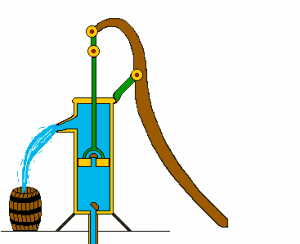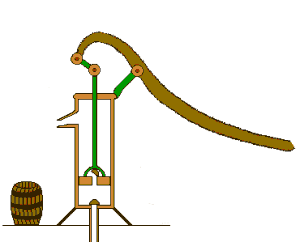
The absolute void cannot exist: for Aristotle "nature abhors a vacuum".
The lift pump (see the animation) already used by the ancients seemed to prove this idea.
The pump's upstroke creates a vacuum under the piston but, since the vacuum is unable to exist, the water rise to fill the space. When the height that the water needs is less than nine metres, all is normal. The problem is that nature gives up at nine metres!
Galileo spent much time to trying to resolve this enigma but he died before discovering the answer.
It was solved in 1643 by Evangelista Torricelli and Vincenzo Viviani who were followers of Galileo.
They demonstrated by their famous experiment:
ANY GIVEN MASS OF AIR HAS WEIGHT !!
Torricelli and Viviani reasoned that if air had a weight, then the weight of air pushing downward on water outside the pump would force the water upward (toward the pump cylinder).
When attempting to raise water by use of a vacuum pump, the weight of the air is insufficient to raise the water higher than nine metres (or 27 feet).

On high:
The lift pump upstroke creates a vacuum;
water rises to fill it.
The aspiration height
doesn't exceed nine metres.
At the bottom:
The pump don't work because the aspiration
is higher than nine metres.
The air pressure can't push the water
because the water weight is too big.